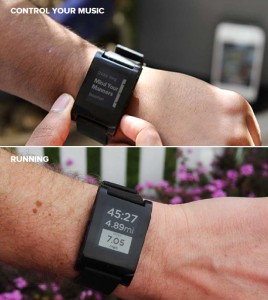Apple’s iWatch: Technology you can wear
15 Feb, 13 | by BMJ
The humble wristwatch, an invention of the early 20th century, looked set to be consigned to history as consumers dumped single function devices and switched to smartphones and tablets which tell the time alongside dozens of other applications.
But Apple is rumoured to have 100 engineers working on a curved glass wristwatch computer, heralding a new era of wearable technology and arguably the most significant development since the digital watch first appeared in 1970.
Technology blogger Jason Perlow predicted that Apple’s “iWatch” would not be an autonomous computer but a “remote display and interaction unit for applications running on a smartphone.” In practice this could remove the need to dig deep into pockets and bags each time you are called, texted, or emailed.
Gadget magazine Stuff published a wish-list for the iWatch, including integration with Apple’s Siri voice-powered search engine, the ability to security lock a stolen or lost smartphone or tablet from the device, and discreetly using it for directions in places where you would not want to be seen with an expensive phone or tablet in your hand.
Predictably, the rumour mill has generated more questions than answers. New York Times’ Technology Editor Nick Bilton wondered if the device could monitor and compute a user’s daily health activity.
The concept of wearable computing first surfaced last year with reports that Google was testing augmented reality glasses. According to Bilton, a wrist-based computer is less scary than having a computer hanging from your brow.
The iWatch may not be the revolutionary product envisaged by Apple. Certainly it isn’t the first to market. The $150 Pebble Watch appeared on people’s wrists last month with the ability to communicate with both iOS and Android opearting systems. This Bluetooth device comes with a cycling app to measure speed, distance and space, and a face you can customise, with the ability to check emails and receive texts. This week Pebble CEO Eric Migicovsky was not commenting on speculation that Apple was interested in buying his company.
So who fancies reading a scholarly journal article on a 144 x 168 pixel watch display? Probably nobody, although until recently people were saying the same thing about smartphones. HighWire Press’ regular snapshot surveys of the academic research community suggested that for years, “mobile” meant “laptop” to them. Not any more, as the dramatic rise in mobile traffic to bmj.com since 2008 demonstrates.
But the Pebble and iWatch might spare you the bother of rummaging in your pocket or bag each time an article you authored was cited, tweeted, or commented on.
by David Payne, editor, bmj.com
